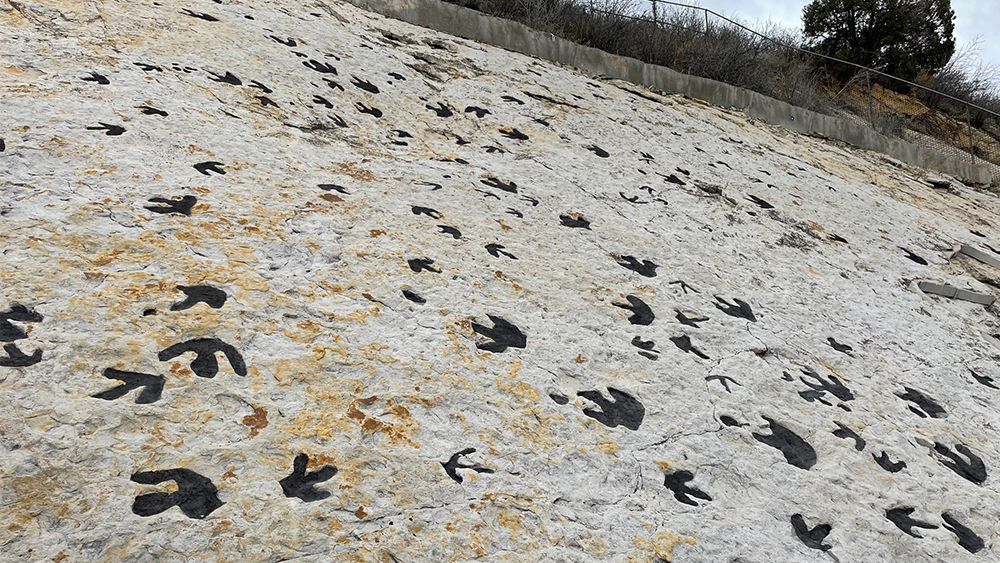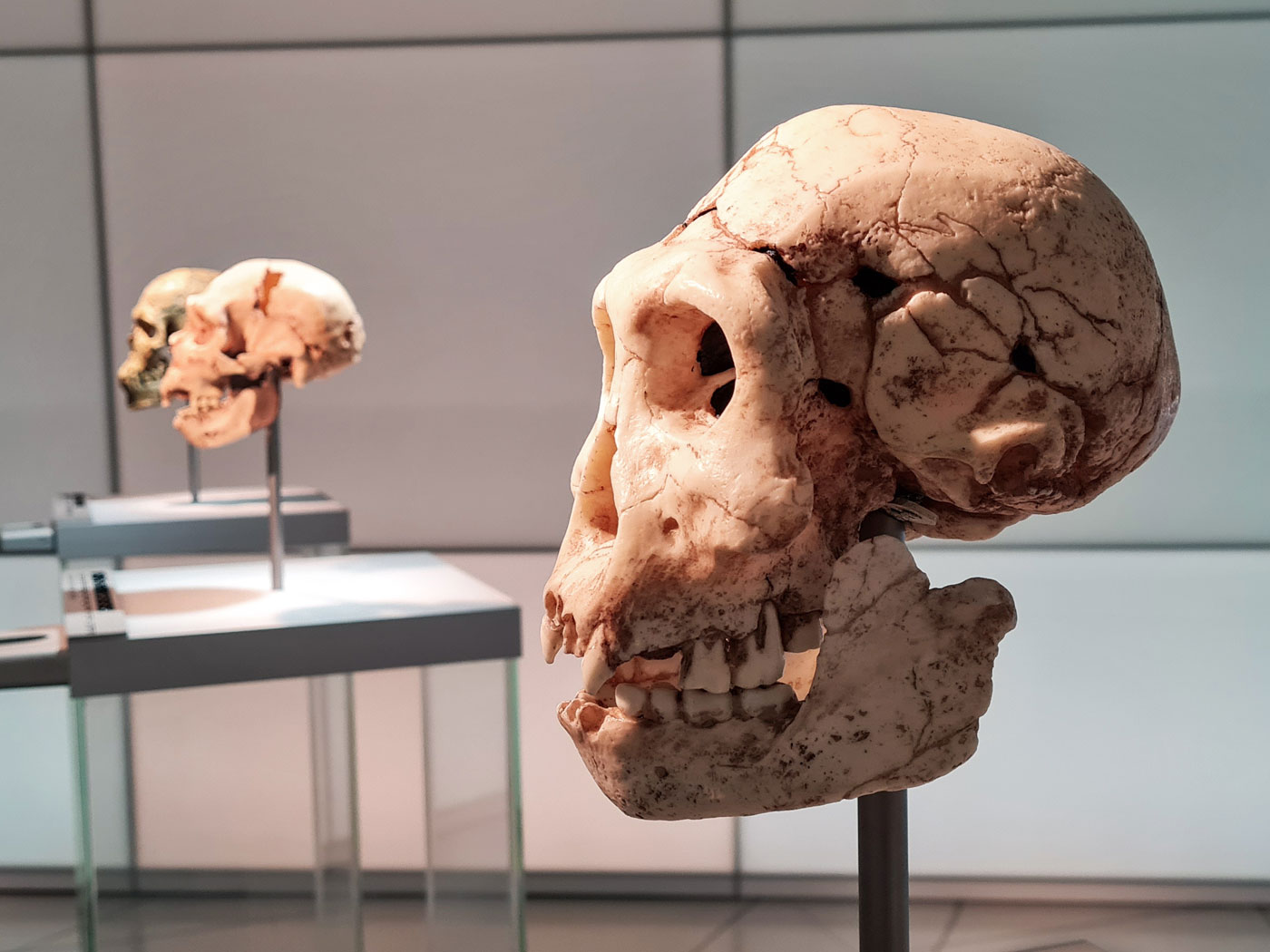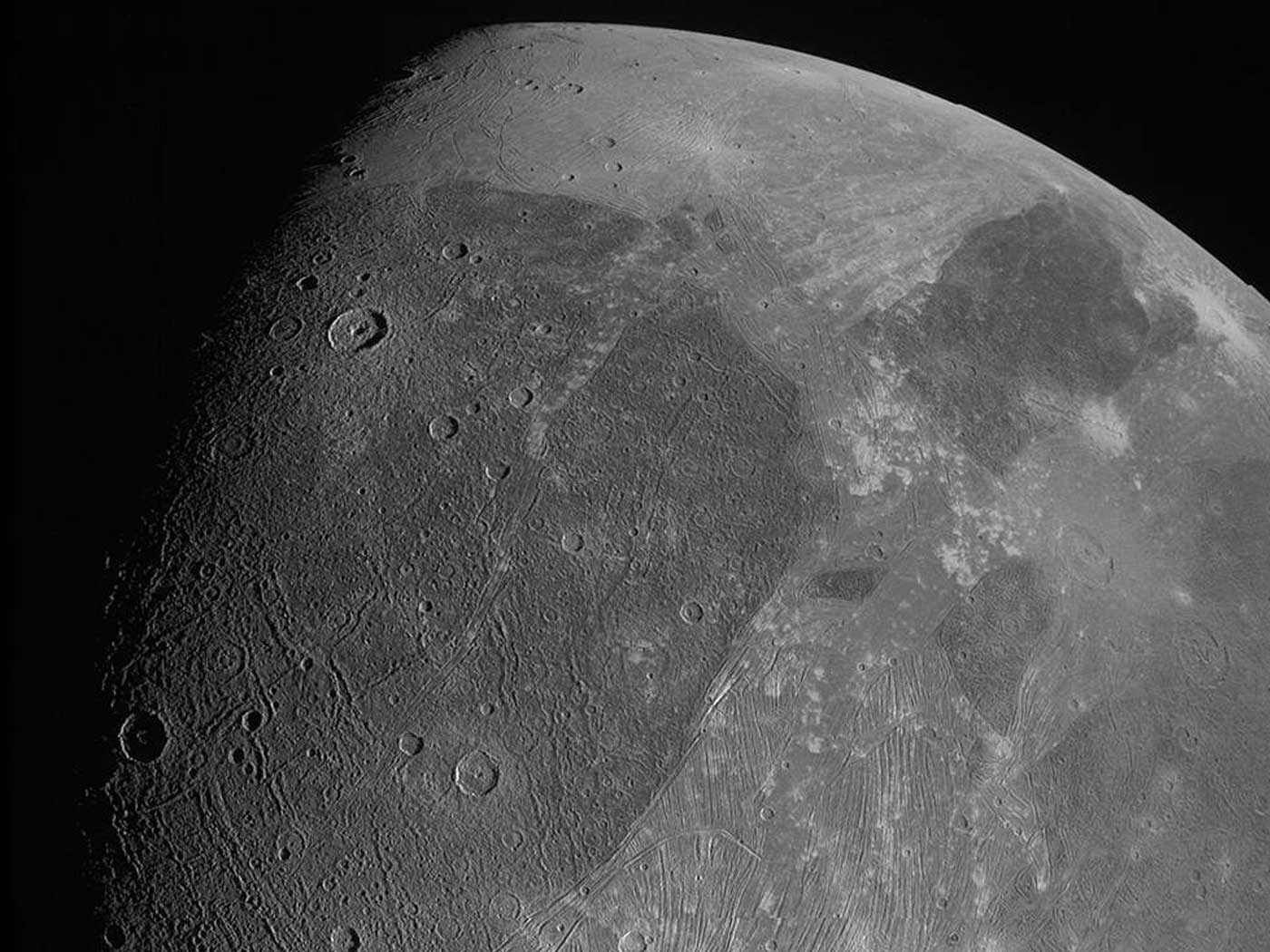A new discovery of a duck-billed dinosaur was announced in southern Chile.1 And not only does this new dinosaur lack identifiable ancestors, it also has evolutionary scientists scrambling to explain its appearance so far south. Creationists have pointed out many times that dinosaurs lack ancestral forms; instead, all fossils show up suddenly and fully-formed, starting with the Cambrian Explosion.2
The new dinosaur, named Gonkoken nanoi, was unearthed in the Dorotea Formation in Magallanes, Chile. This rock unit was deposited near the high water point of the Flood (close to Day 150), near the top of the Zuni megasequence. This is close to the moment when all dinosaurs that were not on the ark were inundated. So, it should be no surprise that marine fossils are also found in this same sand-rich rock unit with the duck-billed dinosaurs. In fact, shark teeth, plesiosaur bones, clams, and snails were identified just below the dinosaur bones in the Dorotea Formation.1 Also, leaf fossils, wood and even coal are mixed in. Sand ripples and cross-beds also indicate these rocks were deposited by rapidly moving water.
Evolutionists struggle to explain the mixing of marine fossils with the dinosaurs and land plants. However, this is actually quite common globally.3 Instead, everything matches perfectly with a Flood interpretation for these rocks and fossils.3
However, the biggest unsolved mystery in the discovery is how these dinosaurs were buried here at the southern tip of Chile.
The authors of the study wrote:
Gonkoken is the first non-hadrosaurid duck-billed dinosaur ever found in Gondwana [southern continents], so its presence so far south poses a challenging biogeographic enigma. Any explanation implies remarkably long [migration] routes, large gaps in between with no records on non-hadrosaurid duckbills, and marine barriers that stopped most Laurasian [northern continents] dinosaurs.1
The evolutionary researchers concluded that the duck-billed dinosaurs must have crossed oceans by island hopping, swimming, or rafting on debris, the problem is there are few islands to use to cross from one continent to another and the oceans separating land masses were many hundreds of miles wide at that point.
But that didn’t stop the evolutionary paleontologists from creating a tall tale that repeatedly borders on the impossible. They wrote:
Whatever the case, duck-billed dinosaurs had the highest vagility (dispersal capacity) documented [at least claimed] for any dinosaurs, with the greatest number of dispersal events that likely crossed marine barriers, namely between Asia and Laramidia [Rocky Mountain region], Appalachia and Laramidia (twice), Europe and Appalachia, Asia and Europe (twice), Europe and North Africa, Laramidia and South America, and South America and Antarctica.
That’s 9 rather miraculous crossings from one continent to another! And many involve major expanses of open ocean! But since evolutionists disregard the reality of the global Flood, they tried to justify these crossings by adding:
Duck-billed dinosaurs are also most often preserved near or within coastal environments (also the case for Gonkoken; see [the paper’s] Materials and Methods; and have been suggested to be apt swimmers, or even semiaquatic.
Regardless, the doomed duck-bill dinosaurs were not good enough swimmers to traverse hundreds of miles of open sea. Nor could they avoid death in the Flood. Indeed, Jack (John R.) Horner and James Gorman described a single hill in Montana which contains the bones of an estimated 10,000 duck-billed dinosaurs.4 These dinosaurs were not likely swimming, but instead stampeding to avoid the waves of water and mud that was about to engulf them. Yet, the Flood came and washed them all away. And we see hundreds of duck-billed dinosaur footprints walking on freshly-deposited Flood sediments all over the world. This swimming story is merely concocted to try and explain their mysterious discoveries on nearly every continent.
A better explanation that fits the evidence is that the global Flood inundated the duck-billed dinosaurs as the water rose higher and higher during the Flood year as described in Genesis. Their burial occurred while the pre-Flood supercontinent split into individual pieces, transporting the animals in the process. Many were likely running away from the waves and buried where they ran. Others may have been washed great distances from where they lived by the massive tsunami-like waves of the Flood. Previously, a similar-sized dinosaur was discovered deep in an oil well core taken about 70 miles off the coast of Norway in the North Sea.5
The Flood is the best explanation for the distribution and the fossilization of these duck-billed dinosaurs. Deliberately forgetting about the global Flood that occurred about 4,500 years ago leads to great confusion and fictional stories. Believing in the truth of God’s Word resolves many apparent mysteries and leads to clarity and salvation through Jesus.
References
- Alarcón-Muñoz, J., et al. 2023. Relict duck-billed dinosaurs survived into the last age of the dinosaurs in subantarctic Chile. Science Advances 9, eadg2456. DOI:10.1126/sciadv.adg2456.
- Clarey, T. 2020. Carved in Stone: Geological Evidence of the Worldwide Flood. Institute for Creation Research: Dallas, TX, pp. 90-113.
- Clarey, T. 2015. Dinosaurs in Marine Sediments: A Worldwide Phenomenon. Acts & Facts. 44 (6).
- Horner, J. R., and J. Gorman. 1988. Digging Dinosaurs. Workman Publishing Co.: New York.
- Hurum, J. H. et al. 2006. A Late Triassic dinosaur bone, offshore Norway. Norwegian Journal of Geology. 86: 117-123.
* Dr. Clarey is Director of Research at the Institute for Creation Research and earned his doctorate in geology from Western Michigan University.






















